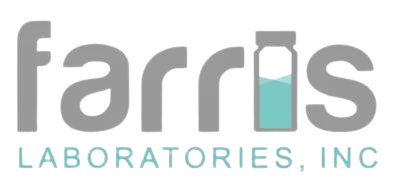Understanding Nebulizer Masks: A Comprehensive Guide
Nebulizer masks are an important component in respiratory care, especially for people managing conditions like asthma or COPD. This article discusses the details of nebulizer masks, their uses, and their significance in respiratory therapy. Here at Farris Laboratories, we aim to provide valuable insights and products for healthcare professionals and patients.
What is a Nebulizer Mask?
A nebulizer mask, often referred to as an asthma machine mask or albuterol machine mask, is a medical device used to deliver medication in the form of mist, which is inhaled into the lungs. It’s commonly used in treating respiratory conditions such as asthma, chronic obstructive pulmonary disease (COPD), and other respiratory ailments.
The Components: Nebulizer Mask and Tubing
Both a nebulizer mask and tubing are required for the effective delivery of medicated mist with a mouthpiece. The mask, which comes in adult and pediatric sizes, ensures that the medication is inhaled properly while a tube connects it to the medication container and air compressor. This allows for a seamless flow of medicated mist to the mouthpiece.
Types of Nebulizer Masks: Sizes, Features, & Uses
Adult Nebulizer Mask:
- Size: Large enough to fit comfortably on an adult face.
- Features: Typically made from clear and flexible plastic.
- Use: Ideal for adult patients requiring aerosol therapy.
Pediatric Nebulizer Mask:
- Size: Smaller to fit children's faces.
- Features: Often colorful with fun designs that appeal to children.
- Use: For kids needing aerosol medication delivery.
Nebulizer Masks for Adults and Children:
- Size: Designed to fit both adults and children.
- Features: Adjustable straps and mask size for a versatile fit.
- Use: Convenient for families or settings where both adults and children require nebulization.
Non-Rebreather Nebulizer Mask:
- Size: Similar to standard adult masks but with a reservoir bag.
- Features: Delivers high concentrations of medicated mist.
- Use: Suitable for patients needing a higher dose of medication.
Venturi Nebulizer Mask:
- Size: Standard adult size with adjustable features.
- Features: Allows for precise oxygen concentration adjustments.
- Use: Ideal for patients requiring specific oxygen levels. This differs from normal nebulizer masks which deliver medicated mist rather than oxygen.
Nasal Nebulizer Mask:
- Size: Compact, designed for the nasal area.
- Features: Targets medication delivery to the nasal passages.
- Use: Best for conditions affecting the upper respiratory tract, such as Allergic Rhinitis or Sinusitis.
Full Face Nebulizer Mask:
- Size: Covers both nose and mouth.
- Features: Ensures comprehensive inhalation of medication.
- Use: Beneficial for patients who struggle with just a mouthpiece.
Disposable Nebulizer Mask:
- Size: Varies, available for both adults and children.
- Features: Single-use for hygiene, often lighter in material.
- Use: Common in clinical settings to prevent cross-contamination.
Reusable Nebulizer Mask:
- Size: Durable sizes for adults and children.
- Features: Made for multiple uses (with proper cleaning).
- Use: Cost-effective and environmentally friendly.
Who Uses Nebulizer Masks?
Nebulizer masks are used by a wide range of people. They are particularly beneficial for those with asthma, COPD, or other respiratory issues.
People with asthma benefit from nebulizer masks as they allow for effective and targeted delivery of bronchodilators like albuterol. Those with COPD also find nebulizer masks beneficial in managing their symptoms, in addition to children with respiratory issues who may find it challenging to use inhalers.
The Benefits of Using a Nebulizer Mask
Nebulizer masks ensure that medication is delivered directly to the lungs, making the treatment more effective. They are especially beneficial for people who have difficulty using inhalers. Finally, with different sizes and types available, they cater to a wide range of patients.
How to Use a Nebulizer Mask
Follow these steps for using a nebulizer mask:
- Connect the Tubing: Attach the nebulizer tubing and mask to the machine.
- Add Medication: Place the prescribed medication into the nebulizer.
- Wear the Mask: Place the mask comfortably over the nose and mouth.
- Start the Machine: Turn on the nebulizer to begin the treatment.
- Breathe Normally: Inhale the medicated mist calmly and deeply.
Maintenance and Care
It’s important to properly maintain a nebulizer mask and tubing. This includes:
- Regular Cleaning: Wash the mask and tubing with warm soapy water after each use. Be sure to rinse thoroughly.
- Sterilization: Periodically sterilize the equipment in order to prevent infections.
- Replacement: Replace the mask and tubing as recommended by the manufacturer or healthcare provider.
In summary, nebulizer masks play a pivotal role in respiratory care, particularly for individuals dealing with conditions like asthma and COPD. Their ease of use, effectiveness in delivering medication, and adaptability for both adults and children make them an indispensable tool in managing respiratory health.
As a medical supply distributor, offering a range of nebulizer masks ensures that we cater to the diverse needs of patients seeking relief from respiratory ailments.
Remember, while nebulizer masks offer significant benefits, they should be used under the guidance of a healthcare professional. It's crucial to follow the prescribed treatment and regimen for optimal results.
References:
- Sockrider M. Nebulizer breathing treatments at home. Am J Respir Crit Care Med. 2020;202(3):P7-P8.
- O'Malley CA. Device cleaning and infection control in aerosol therapy. Respir Care. 2015;60(6):917-930.
- Lin HL, et al. Effect of face mask design on inhaled mass of nebulized albuterol, using a pediatric breathing model. Respir Care. 2007;52(8):1021-1026.




